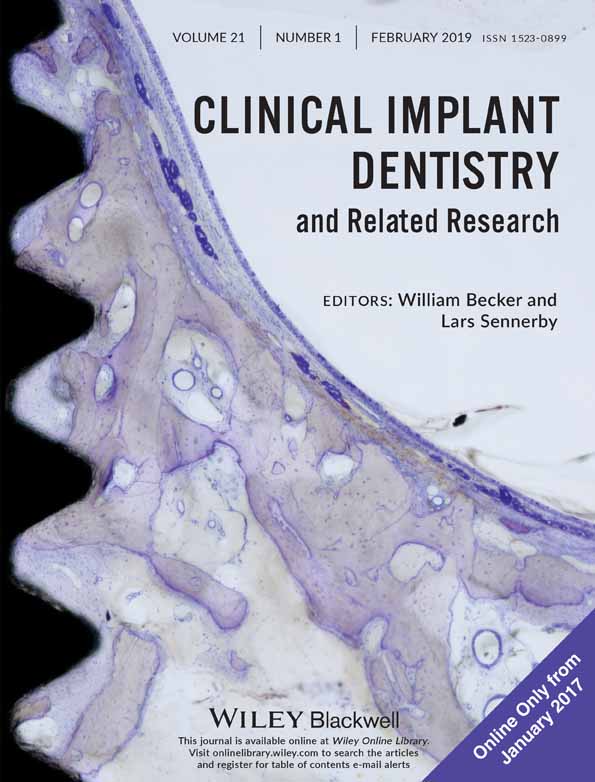Implant health and factors affecting peri-implant marginal bone alteration for implants placed in staged maxillary sinus augmentation: A 5-year prospective study
Abstract
Purpose
Evaluating the extent of and the factors affecting marginal bone level (MBL) alterations and consecutively implant success and implant health for implants placed in staged maxillary sinus floor (SF) augmentation.
Materials and Methods
A 5-year prospective, cohort study was conducted on 85 patients with 124 maxillary sinus augmentation procedure and 295 implants placed. Peri-implant MBL alterations (reductions) were evaluated radiographically at the first year, third year, and fifth year postloading follow-ups and were considered to patient-related risk factors (age, gender, diabetes mellitus, smoking, rheumatic disorders, and history of periodontal disease [PD]), to clinican/surgically related risk factors (membrane perforations, sinus site, and residual ridge height), to implant/prosthesis-related features (implant length, diameter, location, keratinized gingiva, and restoration gap), and to the plaque score. Additionally, implant and prostheses survival/success rate and peri-implant health (mucositis/peri-implantitis) were assessed.
Results
About 267/295 implants (drop-out:n9 pat; 28 implants: 9%) were followed for 5 years (survival/success: 99.3%/96.5%), presenting significant (P < .001) differences of MBL alterations (−1.45 ± 0.38 mm) over time. The univariate analysis demonstrated differences of MBL alterations for smokers versus nonsmokers (P = .005), for patients with versus without history of PD (P = .001), and presence versus absence of plaque (P = .041). In the 5-year multivariate analysis, MBL alteration was influenced by time (P = .001) and was related to risk factors as smoking (P = .001; odds ratio [OR] = 6.563) and history of PD (P = .015; OR = 4.450). Significant ORs for MBL alterations were also found for a restoration gap used for a full-arch dentures (P = .001; OR = 8.275) associated with reduced (≤3 mm) residual ridge height (P = .015; OR = 1.365). The overall 5 year incidence of peri-implant mucositis and peri-implantitis was 25.3% and 3.7% at implant level and 30.3% and 6.6% at patient level, respectively.
Conclusions
Apart from the high success rate and healthy status of implant placed in staged SF seen, MBL alteration increased over time and was negatively affected predominately by patient-specific risk factors such as smoking status and previous history of periodontitis.
CONFLICT OF INTEREST
The authors declare that they have no conflict of interests.




